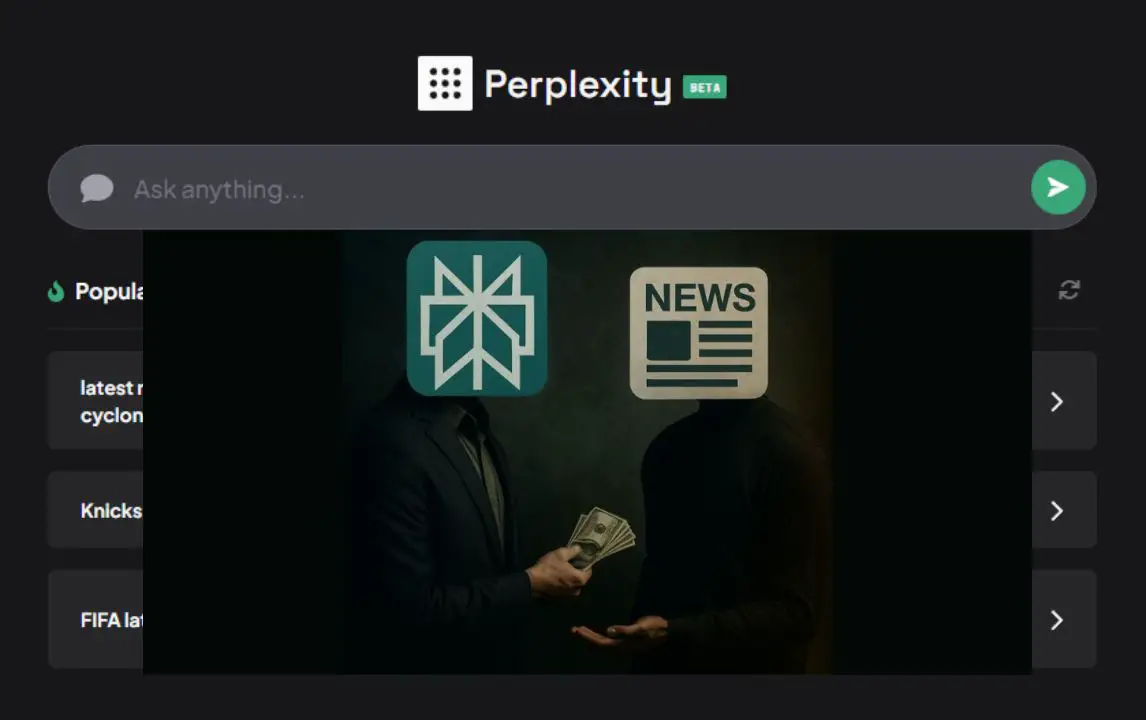Perplexity to Share 80% of Subscription Revenue With Publishers Through Comet Plus
Introduction: A Bold Shift in AI–Media Relations
The relationship between artificial intelligence companies and traditional news publishers has been turbulent for years. Media organizations argue that AI platforms benefit from journalism without offering proper recognition or compensation, while AI firms insist they are creating new tools that enhance access to information.
In a groundbreaking move, Perplexity has announced Comet Plus, a new subscription service built on a revenue-sharing model that allocates 80% of subscription income directly to publishers. This is not just another licensing deal—it’s a reimagined framework designed to align the incentives of AI platforms with the sustainability of journalism.
This initiative could mark a turning point for the industry, establishing a blueprint for how AI and media can collaborate in the digital age.
What is Comet Plus?
Perplexity’s Comet Plus is a premium subscription service priced at just $5 per month. The plan gives users access to enhanced AI-generated answers, enriched with proper references to news and publisher material.
What makes this model truly different is the revenue distribution. Unlike traditional tech-company licensing deals where select publishers negotiate fixed payments, Comet Plus pools revenue across all subscription tiers—Comet Plus, Pro, and Max—and redistributes 80% of it to publishers.
This ensures that every publisher contributing to Perplexity’s ecosystem is compensated proportionally to how their content is used, rather than only those who secure exclusive contracts.
How the Revenue-Sharing Model Works
Perplexity has outlined a transparent payout structure based on three core metrics:
1. Direct Visits via Comet Browser
When a user clicks through to a publisher’s website from Perplexity’s built-in Comet Browser, the traffic is counted toward publisher payouts. This ensures that AI-driven discovery doesn’t just summarize content but also channels valuable visits back to original sources.
2. Citations in AI-Generated Answers
If Perplexity’s AI cites a publisher’s content while generating responses, that reference contributes to the revenue formula. This incentivizes publishers to maintain high-quality, trusted reporting that the AI system frequently cites.
3. AI Assistant Reliance on Publisher Material
When users request tasks or insights where the AI relies heavily on a publisher’s reporting or datasets, this usage is factored into payout calculations.
Together, these metrics aim to create a fair and usage-driven compensation system that scales naturally with both user demand and publisher contributions.
Why This Matters for Publishers
The tension between AI platforms and publishers has escalated sharply in recent years. Many media companies argue that AI tools are trained on vast amounts of journalistic content without permission, undermining the value of their work.
Notable developments include:
- The New York Times lawsuit against OpenAI and Microsoft for alleged copyright infringement.
- News Corp’s public criticism of AI firms for reusing journalistic content without compensation.
- European regulators exploring stricter frameworks for fair use of copyrighted material.
Against this backdrop, Perplexity’s approach offers several advantages:
- Equitable access – Unlike closed licensing deals limited to major outlets, smaller publishers and independent newsrooms also benefit from revenue based on their actual contributions.
- Scalability – The system grows naturally with Perplexity’s subscriber base, rewarding publishers proportionally.
- Transparency – Usage-based payouts are easier to verify compared to opaque lump-sum deals.
For publishers struggling with digital monetization, Comet Plus could be a lifeline in a rapidly evolving media landscape.
Perplexity vs Other AI Licensing Models
So how does Comet Plus stack up against what rivals are doing?
- OpenAI – Reportedly pays select publishers under closed, confidential licensing agreements.
- Google – Pursues deals with major outlets, often focusing on traffic incentives rather than revenue sharing.
- Meta – Has scaled back its news partnerships entirely in some regions.
In contrast, Perplexity democratizes compensation. Instead of leaving smaller publishers out of the loop, it ensures all contributors are part of the ecosystem. This positions Perplexity as an innovator in aligning AI progress with journalism’s sustainability.
User Benefits: More Than Just Revenue Sharing
While the revenue-sharing aspect has captured headlines, subscribers also gain meaningful new features.
Smarter AI Responses
Comet Plus provides richer, more context-driven AI answers with embedded references, ensuring credibility and giving users confidence that responses are sourced from reputable journalism.
New Finance Features
Alongside Comet Plus, Perplexity rolled out AI-powered finance alerts for Pro and Max users. These alerts don’t just notify you when a stock or cryptocurrency moves—they explain why it moved, offering an edge to investors and market watchers.
Unified Subscription Value
Subscribers on all paid plans—Comet Plus, Pro, and Max—will benefit from the pooled revenue-sharing system. Even existing premium subscribers get Comet Plus perks at no additional cost, increasing user loyalty.
Potential Challenges Ahead
While Perplexity’s bold approach is promising, several hurdles remain:
- Publisher Adoption – Skeptical publishers may hesitate to rely on a new revenue model without proven returns.
- Scaling the Subscriber Base – The success of revenue sharing depends on Perplexity’s ability to grow its paying user base significantly.
- Competition from Giants – Rivals like OpenAI and Google have deeper resources to strike exclusive deals that may overshadow Perplexity’s initiative.
- Regulatory Oversight – Governments may still impose stricter rules on AI–publisher relationships, regardless of voluntary revenue-sharing schemes.
Still, Perplexity’s transparent and usage-based payout system sets it apart, especially for publishers seeking sustainable digital revenue.
Why This Could Be a “Model for the AI Age”
Perplexity has framed Comet Plus as more than just a subscription service—it’s a new economic model for the AI era. By tying compensation directly to content usage, citations, and traffic, it creates a system where publishers thrive alongside AI innovation, rather than being sidelined by it.
If successful, this could:
- Reduce lawsuits and conflicts between AI firms and media outlets.
- Establish industry-wide norms for fair compensation.
- Provide sustainable revenue for smaller, independent publishers.
- Encourage higher-quality journalism, knowing AI systems will reward credible sources.
FAQs
Q1: How much will publishers receive under Perplexity’s model?
Publishers collectively receive 80% of subscription revenue across all tiers, distributed based on content usage and traffic metrics.
Q2: How much does Comet Plus cost?
The service is priced at $5 per month, with Pro and Max subscribers receiving Comet Plus features automatically.
Q3: How is this different from OpenAI’s deals?
Unlike exclusive licensing agreements, Perplexity’s model compensates all publishers whose content is used, regardless of size.
Q4: Does this guarantee sustainable income for publishers?
Not necessarily—the payout depends on Perplexity’s subscriber growth. However, it offers a scalable path to recurring revenue.
Q5: What other features does Perplexity offer?
In addition to Comet Plus, Perplexity is expanding into finance tools, including AI-powered market alerts and explanations.
Conclusion: A Defining Moment for AI and Journalism
Perplexity’s decision to allocate 80% of subscription revenue to publishers through Comet Plus represents one of the boldest experiments in bridging AI technology and journalism. Unlike opaque licensing deals, this model is transparent, equitable, and scalable.
While challenges remain—especially in scaling users and convincing publishers—this initiative could reshape how AI and media coexist. If Perplexity succeeds, it won’t just be another AI subscription service; it will set a global precedent for sustainable AI–publisher partnerships in the digital era.
In many ways, this is more than just a revenue model. It’s a blueprint for the AI age, balancing technological innovation with the survival of high-quality journalism.
Read Also:

